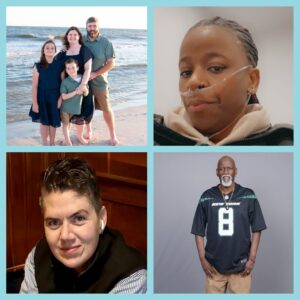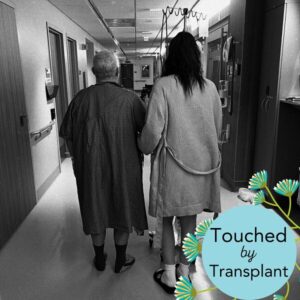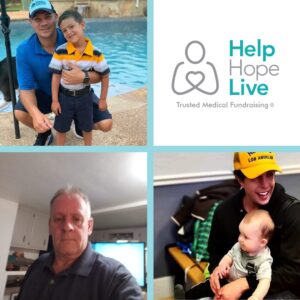You may recognize Ethan Lambert from our social media: the three-year-old is one of only 400 hundred people in the world with the rare disease KIF1A-Associated Neurological Disorder or KAND. In 2022, Ethan’s family recognized their first year after their son’s diagnosis.
We asked mom Kassondra Lambert to tell us about her journey with Ethan’s rare diagnosis—and how she turns hardship into hope by sharing her experiences and resources with other families.

I remember the first time I received a surprising insurance denial.
I was standing in the kitchen and received a phone call from our wheelchair provider. My son had been fit for a custom wheelchair four months prior, and I assumed there would be no issues moving the paperwork through our private insurance. After all:
How could someone refuse to pay for a wheelchair for a three-year-old who cannot walk independently?
I was completely caught off guard as the woman on the phone explained that our insurance wouldn’t cover the $6,449 cost because “the wheelchair would be used primarily outside the home.”
I was heartbroken, confused, and angry all in a single moment.

When you’re faced with critical decisions in addition to advocating for your child’s basic needs within a rare disease family, your mental acuity and energy rapidly decline. Add the stress of everyday life to that equation and you’re working with half the capacity that “average” parents have. Physically, you are depleted and exhausted.
Like many other caregivers, I push my own needs aside and put my child’s needs first.
I make decisions like putting off my own doctor’s appointments or using my contact lenses longer than I should, putting my eyes at risk, because I don’t have the resources to take care of myself consistently like I should.

The emotions that come along with these processes of advocacy and financial preparedness include passion, frustration, anger, and gratitude for me. Is exhaustion an emotion? Because I certainly experience that, too.
We’ve consistently have to advocate and argue to get Ethan’s needs met. Right now, we’re waiting for our insurance to decide whether it will cover an augmentative and alternative communication device that will allow him to continue to communicate despite the physical obstacles of his diagnosis as it progresses—the software alone is $150 if they decline.

We face thousands upon thousands of dollars just so our toddler can keep his mobility and communicate his needs.
The financial implications of having overwhelming medical bills or experiencing insurance denials like these are dire. After all, the need for expensive medical equipment doesn’t go away just because your insurance won’t cover it. Our family is careful to budget as best we can, and we are always seeking out assistance programs.
We’re grateful for Help Hope Live because it allows us to raise money for those surprise medical expenses, including costs not covered by insurance, such as a wheelchair accessible van. We are currently fundraising for an accessible van, an expense which can cost $72,000 to $80,000. Even modifying an existing van exceeds $30,000.

The day after we found out about Ethan’s diagnosis, my husband and I had a discussion about how we were going to navigate this lifelong challenge. We decided to share our story, our journey, with the hope that others would find it helpful.
I founded The Striped Stable to teach parents how to use social media to successfully fundraise for medical expenses. When I first started fundraising, I scoured the internet for information. There was no one writing from a rare disease parent’s point of view, so I forged my own way, learning from what went well and what didn’t, and continuing to push forward.

Today, I feel it’s my duty to help other parents tackle a huge burden and share my knowledge so they don’t have to be up at midnight, searching the internet in tears, wondering how they will pay for a van, treatment, medical travel expenses, and more.
We want to empower families to take action and draw on their communities for resources. Other areas of support include promoting free and low-cost resources, connecting families with nonprofits as well as awareness campaigns that showcase just how expensive medical care and devices are in the United States.

It’s our hope that these campaigns will start a larger dialog among communities and leaders in health care and legislation.
The symbol of The Striped Stable is a zebra, the official symbol of the rare disease community.
This symbolism speaks to the unique stripes that each zebra has, much like the unique challenges created by each rare disease. However, the zebra also gathers in a group in the wild to create the appearance of a larger animal. The stripes of each zebra visually melt into the stripes of the next zebra. As a result, a predator cannot distinguish a single zebra from the collective.
That speaks to the power of community when united.
Just like Help Hope Live, our goal at The Striped Stable is to one day not exist because every single rare disease family has the financial resources they need to meet their out-of-pocket expenses. Until then, my goal includes being the go-to resource for parents interested in starting a medical fundraising campaign and empowering more families to tell their rare disease stories.

I want families who are affected by a rare disease to know this: you are not alone.
There may or may not be a community for a specific rare disease, but there is a larger community here to support you, and we know how you feel. Connect with this community. A great place to start is on social media, including Facebook Groups and Instagram accounts.
Ultimately, “rare disease” is a misnomer: while it is true that each disease may only impact a few hundred or thousand people per year, collectively:
1 in 10 Americans is directly affected by a rare disease.
That number doesn’t include individuals who are indirectly affected, such as family members, friends, co-workers, and classmates. I truly believe that every single person knows at least one person living with a rare disease.

I believe it is our duty to bring awareness, funding, and research initiatives to the community to prevent, treat, and cure rare diseases.
To me, hope means looking up—even if it’s just a degree or two.
This last year has been one of the hardest of my life, but it has also allowed me to connect to a deeper purpose—both within myself and within wonderful communities that have extended far beyond my own. For that, I am grateful.
Fun fact: did you know a herd of zebras is called a dazzle?
We’re dazzled by Kassondra’s commitment to lifting and supporting other rare disease families. Connect with The Striped Stable online and visit Ethan’s fundraising page here.
Written by Emily Progin










